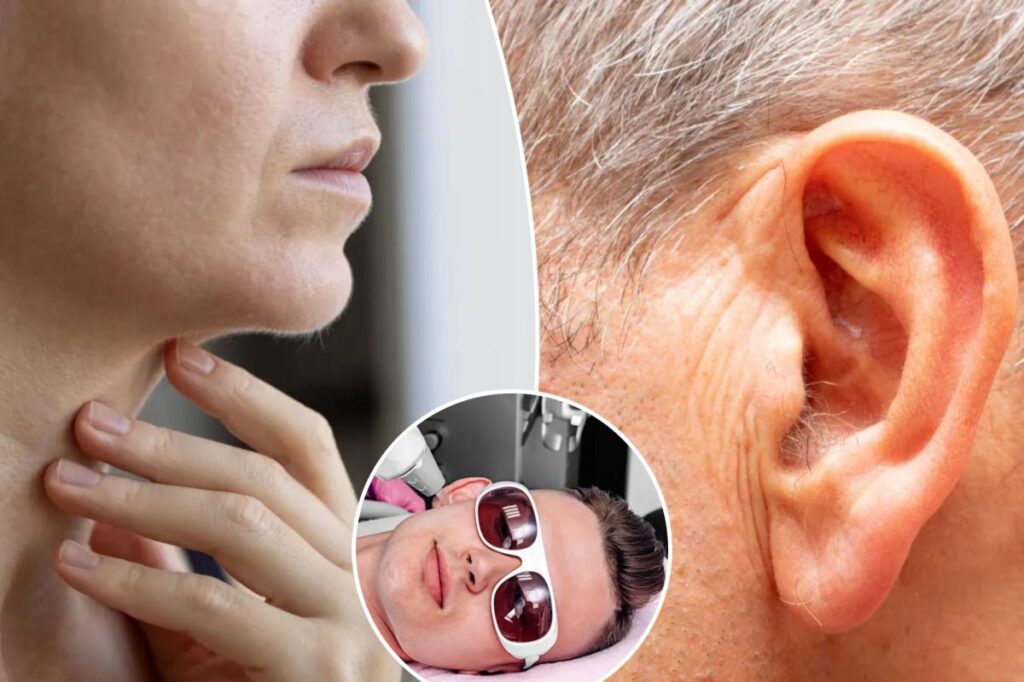What the pluck?
As if your 40s weren’t maddening enough, your hair starts having its own midlife crisis — graying, thinning and popping up in the oddest places.
“It is completely normal as a male or female to notice hair growth in places you would not expect as we age into our 40s and 50s,” Dr. Brett Bolton, founder of Great Hair Transplants, told The Post.
“The most likely factor for this change of hair growth is hormonal, plain and simple.”
If you’re facing this chaos, chin up. Bolton reveals where you might catch unusual strays — and how to shed these sneaky sprouts.
RELATED: Best IPL hair removal devices that made us swear off shaving
Oh, the places you’ll grow…
Women will start to spy hair on their chin, jawline and upper lip in their 40s and 50s, Bolton said, while men might spot it in their ears and nose.
“Obviously, it’s not limited to only those areas of the body,” he added.
“Plenty of women will notice it on their nipples and chest area, while men are going to see it on their back and shoulders or maybe even their toes.”
Nipples and toes, oh my! Thank you, hormones.
In perimenopause and menopause, women often experience an excess of male hormones because their estrogen levels drop so sharply.
This imbalance can spur the growth of dark, coarse hair on their face, chest, back or stomach, in a pattern similar to men.
In men, hair follicles in places like the ears, nose and face become more sensitive to testosterone with age. Existing fine hairs grow longer and thicker, and new strands fill in.
While distressing tresses can be a normal part of aging, patches of unusual, coarse hair may signal an underlying condition, like polycystic ovary syndrome (PCOS) or Cushing’s syndrome, that requires medical attention.
Clear-cut choice for hair removal
While it’s easy for dreadful hair to bloom, evicting these trespassers isn’t so simple.
Waxing, tweezing, shaving and applying over-the-counter creams are temporary solutions, Bolton said, while the “best answer” for permanent hair removal hasn’t changed since the late ’90s.
Laser hair removal uses a concentrated beam of light to target and damage hair follicles, inhibiting future growth.
“Different skin and hair types respond differently to different types of lasers,” Bolton explained.
“This is why it is crucial to go to a laser hair removal specialist with multiple lasers with different wavelengths that will pertain to your skin type and follicle type specifically.”
An electrifying approach for women
While Bolton recommends laser removal for both sexes, some women may benefit from electrolysis for spots on the jawline, chin and upper lip.
In the procedure, an electric current is applied to the hair follicle to destroy the root.
Bolton said electrolysis is a “fine choice for permanent hair removal,” but he warned that it can lead to pain and scarring if not done properly.
“Smaller areas are easily treated with electrolysis,” he said, “however, the laser is much quicker in most cases and more effective in the right hands.”
Read the full article here


